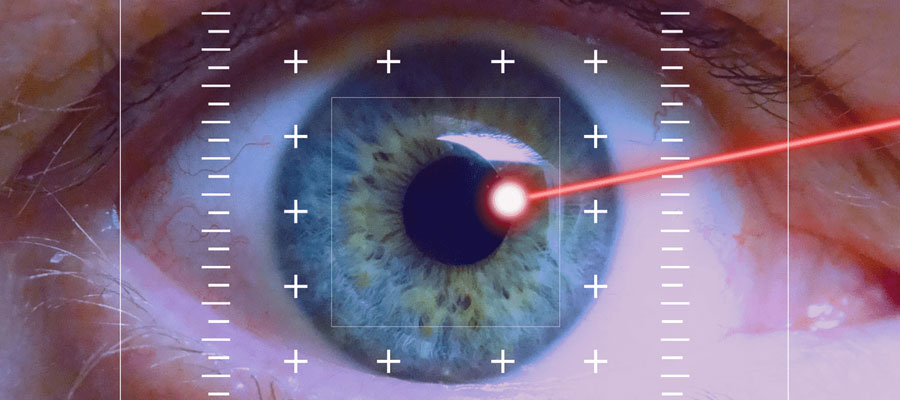Which lens should I choose for cataract surgery?
Cataract is a disease that results in decreased vision as a result of clouding of the lens of the eye and is successfully treated with modern surgical techniques. Hundreds of thousands of people undergo cataract surgery in our country every year.
In cataract surgery, the cloudy lens of the eye is cleaned and removed, and is replaced by an artificial lens. Until recently, only one type of lens was used and patients had to wear glasses after cataract surgery.
Today, with the development of lens technology, disorders such as farsightedness, nearrsightedness, and astigmatism can be corrected simultaneously with cataract surgery.
It can be difficult to decide on the right lens from among the different options. At this stage, daily works, the patient’s profession, preferential reasons such as the desire to get rid of glasses and eye-related features are taken into account.
While deciding on the suitable lens for your eye, your ophthalmologist will examine you in detail and inform you about the appropriate lens options.
What type of lenses are used in cataract surgeries?
- Monofocal (single vision) lenses: These lenses have a single focal point and only clearly show the distance at which they are set. It can be adjusted for far or near distance according to the patient’s preference. It is often adjusted for far distance, and glasses are preferred for near distance.
- Multifocal lenses: These lenses have multiple focal points in the form of rings. In this way, they show both near and far distances clearly. In recent years, trifocal lenses, also called smart lenses, have increased vision clarity at intermediate distances. In these lenses, complaints such as light scattering and wavy vision may occur, although the image at all distances falls onto the retina clearly at the same time. Since this situation is different from the image that our brain is used to, patients may find this situation strange at first. But after a certain time, our brain gets used to this situation and the complaints disappear.
- EDOF (Extended-Depth-of-Focus) Lenses: Although the number of rings in these lenses is low, the focal distances have been increased by using technology. In this way, the complaints seen in multifocal lenses are much less. Although they do not show near distance very well, they show far and intermediate distances clearly. It is preferred in patients who are not suitable for multifocal lens use, who are young, who have undergone laser surgery, and as well as in patients in occupational groups where far distance and night vision are important.
- Toric lenses: Astigmatism is a type of eye disorder. The beam coming into the eye cannot be focused on a single point and a diffuse image is formed. For this reason, both near and far vision are impaired. Today, astigmatism can be corrected with toric intraocular lenses.
Most of my daily works is within near working distance. Which lens should I choose?
If you spend most of your time with near-distanced jobs such as computers, reading, writing and you do not want to wear glasses while working, you will have several options. One of them is to adjust the monofocal lens for near distance.
In this case, you will be able to see near distance without glasses, but you will need to use far distance glasses. In another method, lens numbers are adjusted according to far vision for one eye and near vision for the other eye. This method is called monovision.
But getting used to seeing differently can be difficult. Another option would be smart lens technology. In this case, the use of near and far glasses will not be necessary.
Which lens should be preferred if I drive a lot at night?
If you drive a lot at night or your profession is driving, lens selection becomes even more important. Since multifocal lenses have side effects such as wavy vision, light scattering, loss of contrast at night, they are not preferred in professions that require frequent nighttime driving, such as driving. In this case, it would be more appropriate to use monofocal lenses.
I have astigmatism in my eye. Can astigmatism also be corrected in cataract surgery?
Astigmatism is an eye disorder that affects both far and near vision. If astigmatism is not corrected during cataract surgery, the patient should use both distance and reading glasses.
Astigmatism can be corrected with toric intraocular lenses. If the patient prefers a multifocal lens, astigmatism should definitely be corrected. Otherwise, it will cause serious vision complaints.
Which lens should I choose if I have a disease other than cataract in my eye?
If you have diseases such as glaucoma, macular degeneration, diabetic retinopathy, corneal irregularity, multifocal (smart) lenses should never be used. The amount of light in the vision is reduced because multifocal lenses divide the light from the far and near vision.
This makes it difficult for the already damaged retina to form a clear vision. For this reason, if you have another disease in your eyes that causes vision loss, monofocal lenses should definitely be preferred.
Can I get intraocular lenses for near vision without a cataract in my eyes?
The lens of the eye becomes hardened after a certain age and loses its flexibility. It cannot focus at near distance and near vision is impaired. This condition is called presbyopia. Presbyopia complaints become more apparent around the age of 50.
From this age, lens replacement can be done by attaching a smart lens for near vision. In this way, the patient can see both near and far without glasses. This process is called presbyopic lens exchange (prelex).






